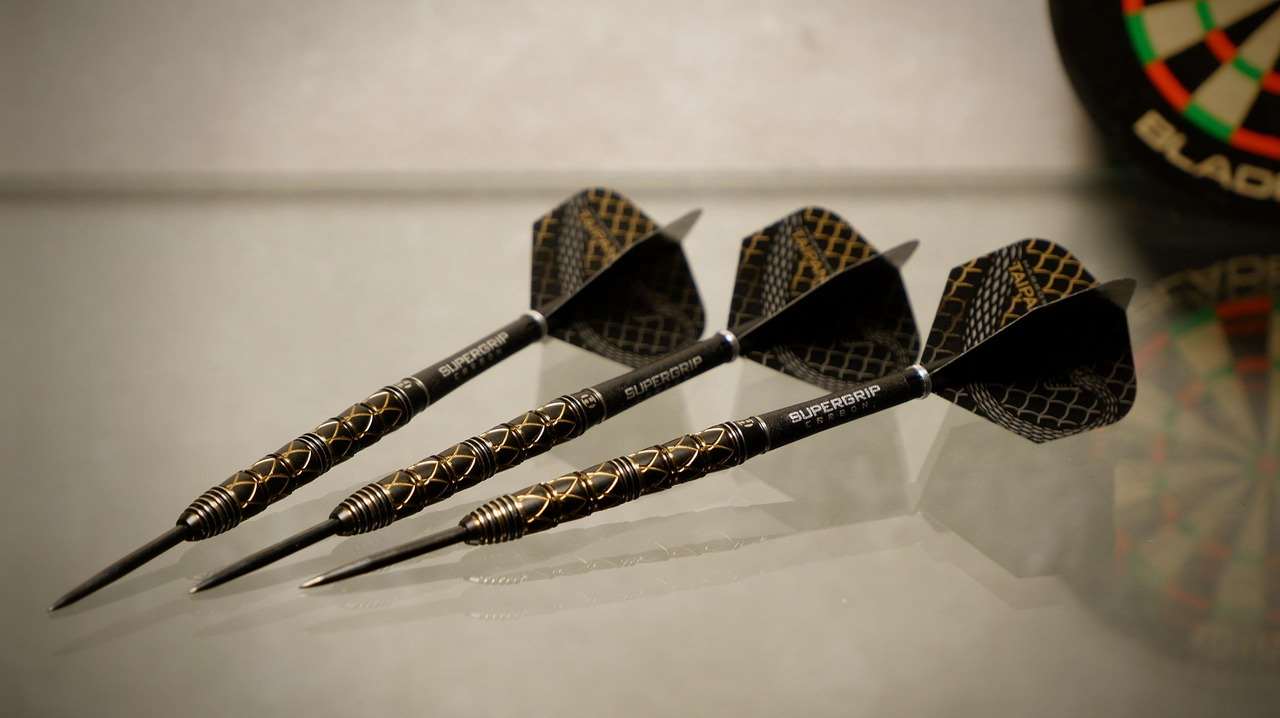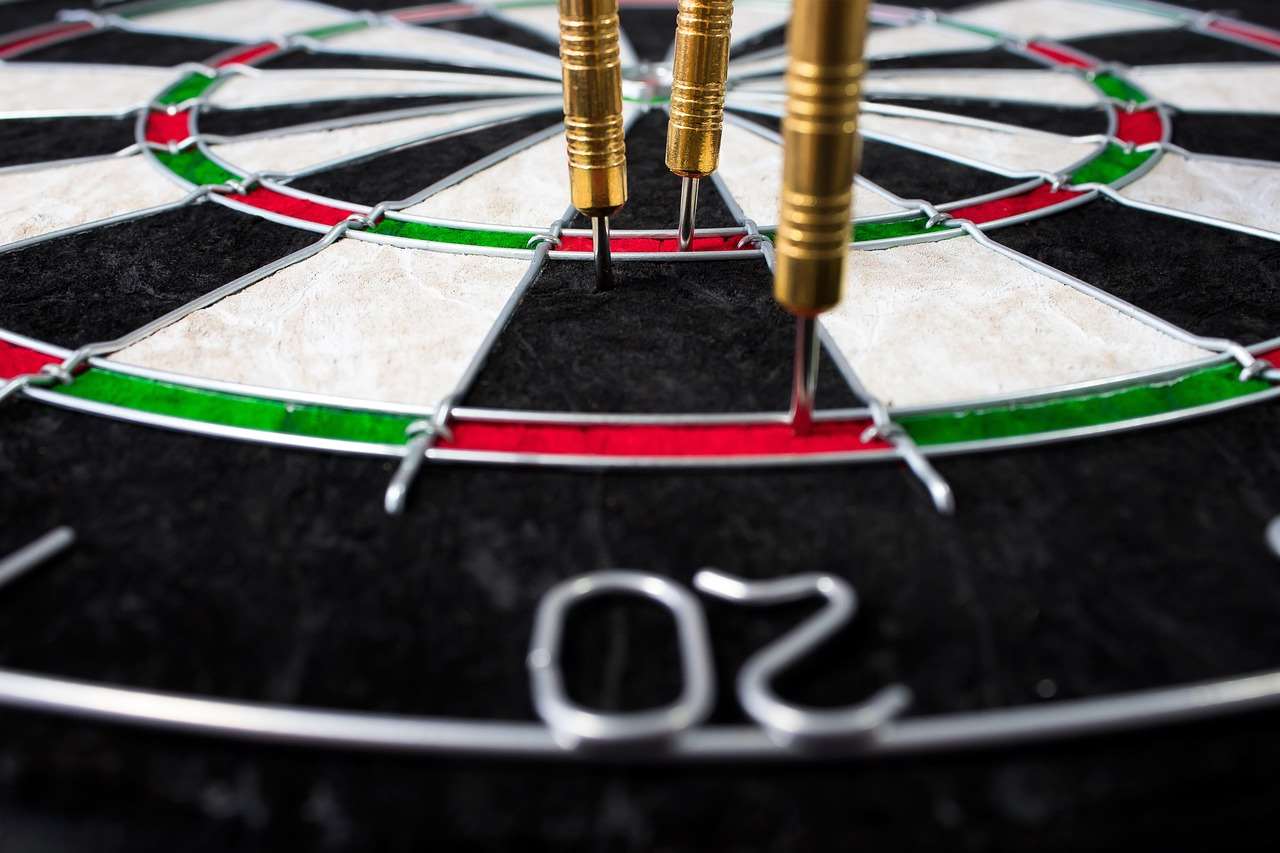The essence of darts lies in its simple yet strategic gameplay: accurately throwing small missiles at a circular board to score points. This darts description encompasses everything from the equipment used to the intricate strategies employed by seasoned players. This article will explore every aspect of the game, from understanding the dartboard to mastering throwing techniques and variations in gameplay.
⚠️ Still Using Pen & Paper (or a Chalkboard)?! ⚠️
Step into the future! The Dart Counter App handles all the scoring, suggests checkouts, and tracks your stats automatically. It's easier than you think!
Try the Smart Dart Counter App FREE!Ready for an upgrade? Click above!
Understanding the Basics of Darts
At its core, darts is a game of precision and calculation. The objective is straightforward: reduce your score to zero, typically starting from 301 or 501, by strategically hitting specific sections on the dartboard. Before you can even think about scoring, you need to understand the dartboard itself.
The Dartboard: Anatomy of a Target
The standard dartboard is divided into 20 numbered sections, each separated by wires. Key areas include:
- The Bullseye: Worth 50 points (the inner bull) and 25 points (the outer bull).
- The Double Ring: The outer ring, doubling the score of the section it occupies.
- The Treble Ring: The inner ring, tripling the score of the section it occupies.
- The Numbered Sections: Each section is worth its corresponding number.
Understanding these sections is crucial for strategic play and accurate scoring. A good player will learn to aim for specific doubles and trebles to efficiently finish a game. For example, understanding when to aim for a single is just as important as hitting the treble 20.

Choosing Your Darts: A Matter of Preference
Selecting the right darts is a highly personal process. Factors to consider include weight, grip, and balance. There are various types available:
- Barrel Material: Brass, nickel silver, and tungsten are common choices. Tungsten is denser, allowing for slimmer barrels and tighter groupings.
- Dart Weight: Typically ranges from 20 to 26 grams. Beginners often start with heavier darts, while experienced players may prefer lighter ones.
- Shafts and Flights: These components affect the dart’s aerodynamics. Experiment with different lengths and shapes to find what works best for you.
It’s recommended to try out different dart types to find the ones that best suit your throwing style. Don’t be afraid to experiment with different combinations of barrels, shafts, and flights.
Mastering the Throw: Technique and Practice
A consistent throwing technique is paramount for success in darts. While there’s no single “correct” way to throw, several key principles can significantly improve your accuracy. Also important is your dartboard position relative to the oche.
Stance and Grip
Your stance should be comfortable and balanced, typically with one foot forward and angled towards the board. Your grip should be firm but relaxed, allowing for a smooth release. Many players find that a three or four-finger grip works best.
The Throwing Motion
The throwing motion should be smooth and fluid, originating from the elbow and shoulder. Avoid jerking or snapping your wrist, as this can lead to inconsistent throws. Follow through completely after releasing the dart. Practicing this motion repeatedly will help you develop muscle memory and improve your consistency. A Cricket darts scorer app can also help track your progress!

Practice Drills for Accuracy
To improve your accuracy, focus on specific targets during practice. Try these drills:
- Target Practice: Aim for a single number repeatedly, focusing on hitting the center of the section.
- Double Practice: Practice hitting specific doubles to improve your finishing ability.
- Around the Clock: Start at the number 1 and work your way around the board, hitting each number in sequence.
Scoring and Game Variations
While the basic principle of darts remains the same, there are several popular game variations, each with its own scoring system and rules. Understanding these variations adds depth and excitement to the game.
301 and 501: The Classic Games
In 301 and 501, players start with the respective score and aim to reduce it to zero. The winning throw must be a double. Busting, or going below zero, results in the player’s score reverting to the score at the start of that turn.
Cricket: A Strategic Battle
Cricket is a more complex game where players must “close out” numbers by hitting them three times. Numbers 20 through 15 and the bullseye are used. The first player to close out all the numbers and have a higher score wins. In cases like darts set vs leg, the rules are well defined.
Other Variations
Many other variations exist, each with its unique twist on the game. These include:
- Around the World: Players must hit each number in sequence, starting with 1.
- Killer: Players must establish a number and then knock out opponents by hitting their numbers.
Darts Description: Equipment and Maintenance
Maintaining your darts and dartboard is crucial for optimal performance and longevity. Proper care ensures consistent play and prevents damage to your equipment.
Dartboard Care
Rotate your dartboard regularly to distribute wear evenly. This prevents specific sections from becoming overly worn and extends the lifespan of the board. Avoid using excessive force when throwing darts, as this can damage the sisal fibers.
Dart Maintenance
Clean your darts regularly to remove dirt and grime, which can affect your grip. Sharpen the points periodically to ensure they stick properly in the board. Replace damaged shafts and flights promptly to maintain the dart’s aerodynamics.
Darts Terminology: Understanding the Lingo
Like any sport, darts has its own unique terminology. Understanding these terms can enhance your understanding of the game and allow you to communicate effectively with other players. Sometimes it’s hard to know what does legs mean in darts, but here are some common terms:
- Ton: A score of 100.
- Ton 80: A score of 180 (three treble 20s).
- Bust: Scoring more than needed to reach zero, or finishing on a non-double.
- Checkout: The final score needed to win a leg or match.
Familiarizing yourself with these terms will not only improve your communication but also enhance your appreciation for the nuances of the game. Don’t forget to consider using a dartcounter kostenlos app during practice or casual games!

Strategic Play: Beyond the Basics
While accuracy is essential, strategic play is what separates good players from great ones. Knowing when to go for specific numbers and how to set up your finish are critical for success in darts. Understanding the odds, and how these odds relate to darts n-hits is also important.
Calculating Outs
A key aspect of strategic play is calculating your outs, or the combinations of throws needed to finish the game. Prioritize setting up finishes that require hitting doubles, as these are the only throws that can win the game. Planning ahead and thinking several throws in advance is crucial for maximizing your chances of success.
Defensive Play
Sometimes, the best strategy is to play defensively and block your opponent’s scoring opportunities. This might involve aiming for numbers that your opponent needs to close out or setting up finishes that are difficult for them to achieve. Being aware of your opponent’s strengths and weaknesses can help you make informed decisions and gain a competitive edge. If you are wanting to see when does darts finish, this requires more strategy than just playing each round.

Conclusion
This darts description has covered the fundamental aspects of the game, from equipment and technique to scoring and strategy. By understanding the basics, practicing consistently, and developing a strategic mindset, you can significantly improve your darts game. So pick up some darts, aim for the bullseye, and enjoy the challenge and camaraderie that this timeless game offers. Start practicing and consider trying flight club darts games to hone your skills! Take what you’ve learned today, and put it into action. Your journey to becoming a skilled dart player starts now!
Hi, I’m Dieter, and I created Dartcounter (Dartcounterapp.com). My motivation wasn’t being a darts expert – quite the opposite! When I first started playing, I loved the game but found keeping accurate scores and tracking stats difficult and distracting.
I figured I couldn’t be the only one struggling with this. So, I decided to build a solution: an easy-to-use application that everyone, no matter their experience level, could use to manage scoring effortlessly.
My goal for Dartcounter was simple: let the app handle the numbers – the scoring, the averages, the stats, even checkout suggestions – so players could focus purely on their throw and enjoying the game. It began as a way to solve my own beginner’s problem, and I’m thrilled it has grown into a helpful tool for the wider darts community.